The Lamplighters League review: the best turn-based tactics game this year

If it were me hunkering down next to a wall and some crates in the heat of Cairo while the ground nearby is consumed by fire, fanatics with swords chase after me, and some weird, tentacled Eldritch horror is casting a black hole of doom on my friends, I’d probably rethink my life choices. For the agents of The Lamplighters League, it’s just Tuesday.
Presently, those agents are Lateef, a master thief and native to Cairo, Ána Sofia, a former nun with magical powers, and Judith, an American engineer. They’re here to sabotage a radio tower used by the Banished Court, a group of unpleasant fanatics, industrialists, and nobles opposed to the Lamplighters League. You begin every mission in Stealth Mode, during which you move your group around in real time, and from there it’s really up to you how you want to proceed.
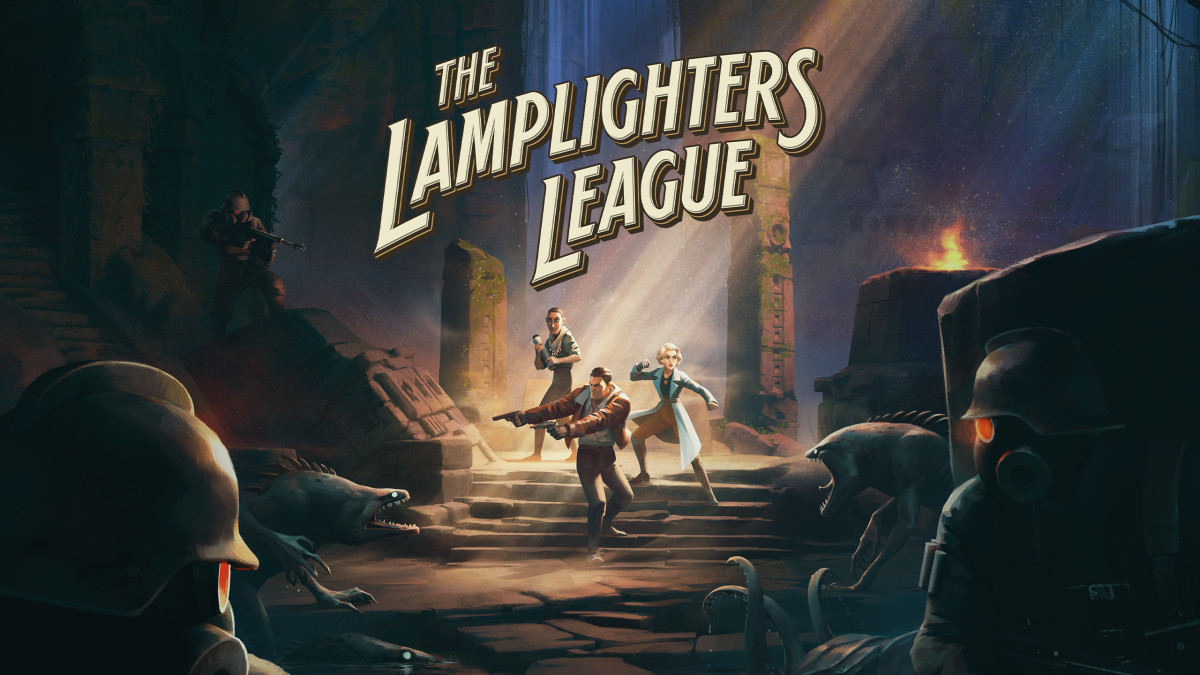
Once you end up in turn-based combat, you need to use your limited amount of action points to extricate yourself from the imminent danger. Each agent can move around and attack, but other than that, their skill sets are diverse and can be mixed up even more through one of the game’s systems, the Undrawn Hand (but more on that later).
Like most turn-based games, The Lamplighters League features half and full cover as well as probability-based combat that can result in lucky critical hits or lousy misses. All those chances are displayed above your targets, so you can always make informed decisions on your next move. Terrain, of course, plays a huge role – the high ground always offers an advantage, while pools of water or barrels of oil can be both opportunities and dangers depending on your tools and those of your enemy. All of your characters take turns simultaneously, so you can easily combo their abilities and plan big moves without being interrupted.
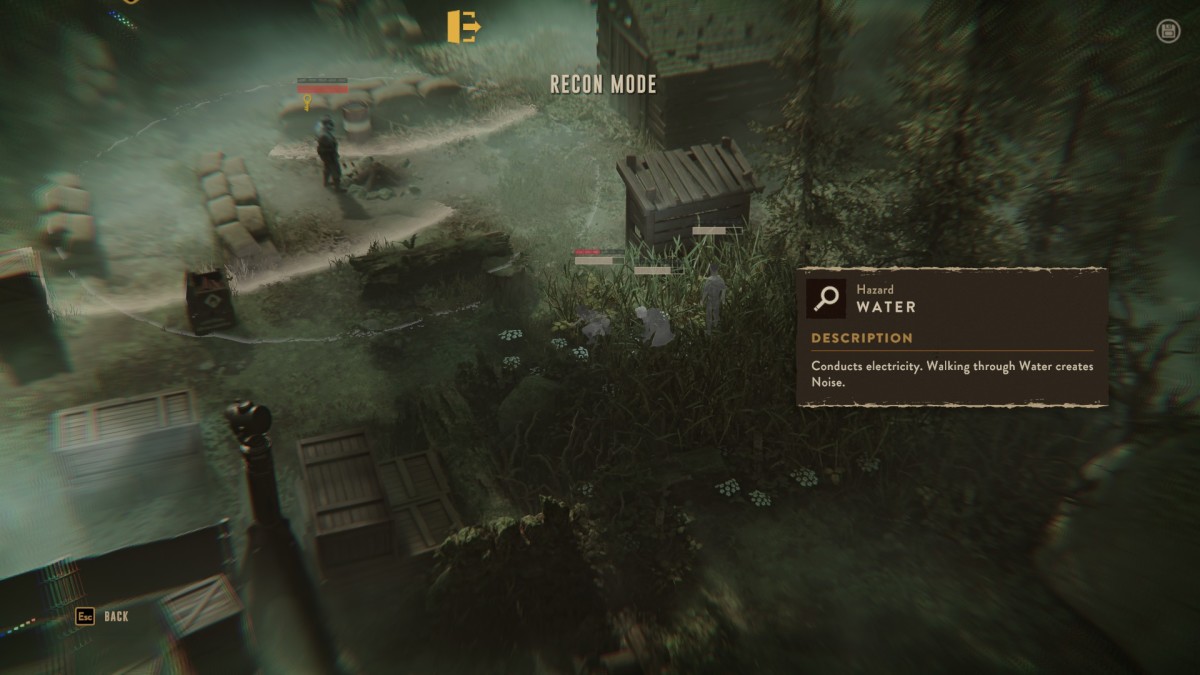
On this mission, I’ve eliminated the guards at a forward checkpoint and snuck on top of the roof of a building to quickly take down two additional targets, who were protecting a stash of useful items. Closer to my main target, I used Judith’s shock mine to lure some patrolling zealots out, clearing a path into some high vegetation – a great place to hide. The radio tower is on top of some stairs at the end of the plaza. The timing is tight, but thanks to keeping an eye on the patrol pattern of the tentacle monster guarding the stairs, I squeeze my team up there. I throw a landmine into a pool of oil for my opening move before combat begins with a bang as the zealot trips the explosive and goes up in flames.
I send Judith in to soak up the attention (and damage) of the radio tower’s guards. She carries a huge metal riot shield and a pistol and comes with various melee and defensive skills. I use her signature ability to taunt the surrounding enemies into attacking her. That opens some space for Lateef and Ána Sofia to accomplish the mission of taking out the tower. Lateef, as a thief, is good at evading, while Ána Sofia is a combat medic with some healing and support abilities. I boosted Lateef’s survivability by equipping him with a card from the Undrawn Hand, which heals him up and inspires him whenever he dodges an attack – the guy’s a menace now as he sprints from cover to cover, gaining stacks of evasion along the way.
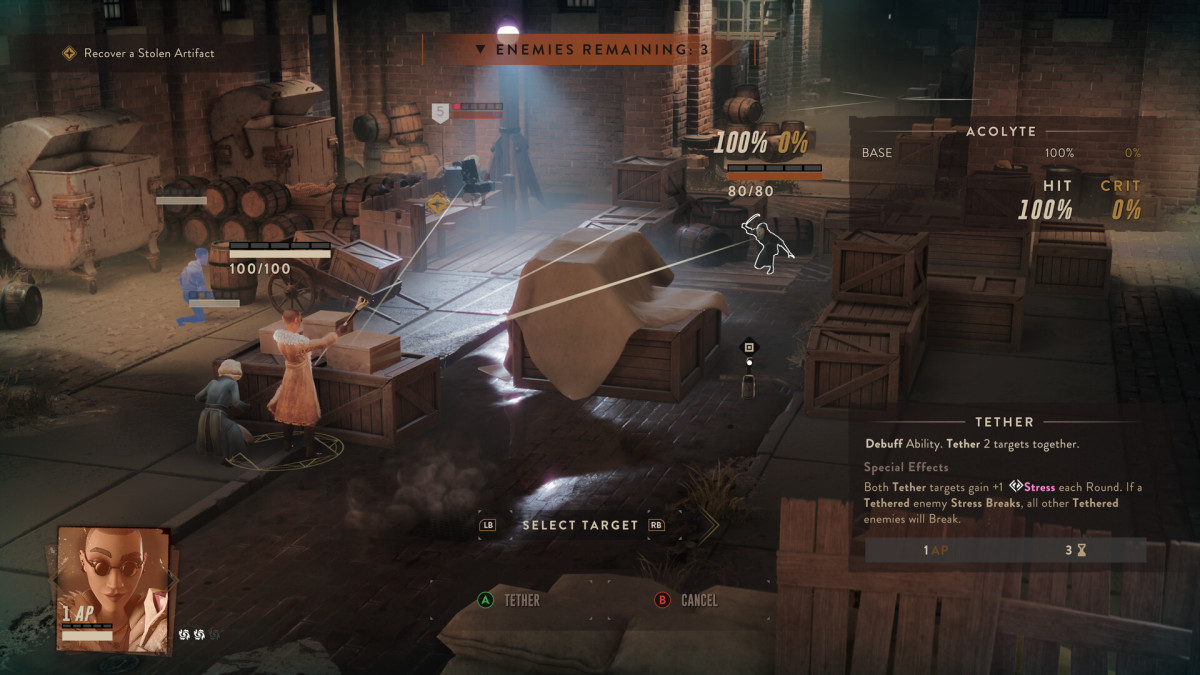
Things get a bit dicey when the Eldritch horror decides to join in, forcing my team to keep moving around by casting a whirlpool of badness you don’t want to stay in for an entire turn. Some heroic dodging from Lateef, who also blinds the creature, buys enough time to get everything wrapped up. It cost me all the consumables I picked up on the way to keep everyone alive, but that’s what they’re for, eh?
You can play The Lamplighters League in the XCOM style and eliminate whichever enemies you can find, triggering an all-out battle at every opportunity, or you can be sneaky and stealthy. Each agent belongs to one of three infiltration classes: Sneak, Saboteur, and Bruiser. A Sneak is light-footed, has extra stealth capabilities for hiding in plain sight, and can clamber up walls. They can also sneak up on people from behind and instantaneously take them down. Saboteurs are adept at picking locks and come equipped with mines. Once thrown, they make some noise to attract nearby enemies before they detonate themselves. Bruisers are a little more hands-on: They can break through fragile walls and run over entire groups of enemies on their path.
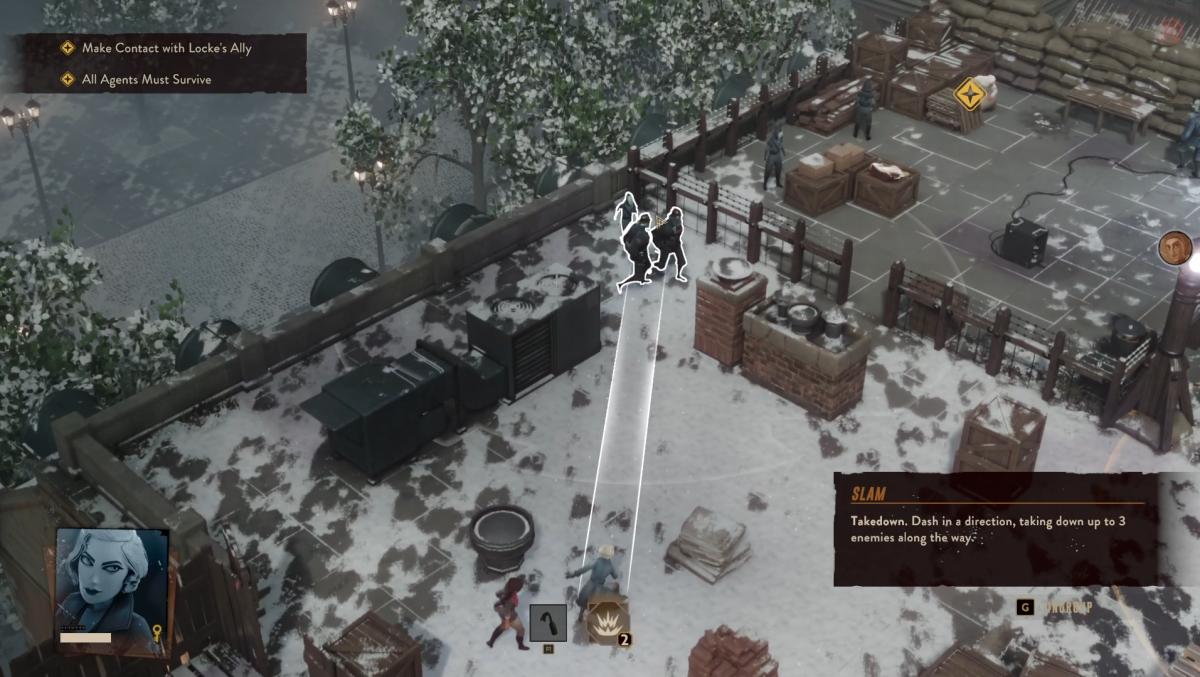
Each agent has a limited amount of charges for these infiltration abilities, so scouting around and finding the best way of employing them is crucial. Exploration is an important part of the game. It allows you to find opportunities to pick off lone sentries, but will enable you to discover items like consumables and supplies for your base as well. What’s more, sometimes there are alternative paths that allow you to circumnavigate enemies and strike from a surprising angle. I’ve found that avoiding the main target at first and scouting the rest of the map is a good habit, as it allows you to take out potential enemy reinforcements and clear your escape route early.
This is an important point: Unlike most turn-based tactics games, The Lamplighters League isn’t about winning fights. It’s about accomplishing a goal and getting back home alive to enjoy your payment. You won’t gain XP from fights, as progression is tied to mission rewards and what you can find on the map. You want to avoid fights for as long as you can and only take them under the conditions you dictate, because for the most part, you aren’t playing heroes out to save the world – even though that’s what the lovable cast ends up reluctantly doing.
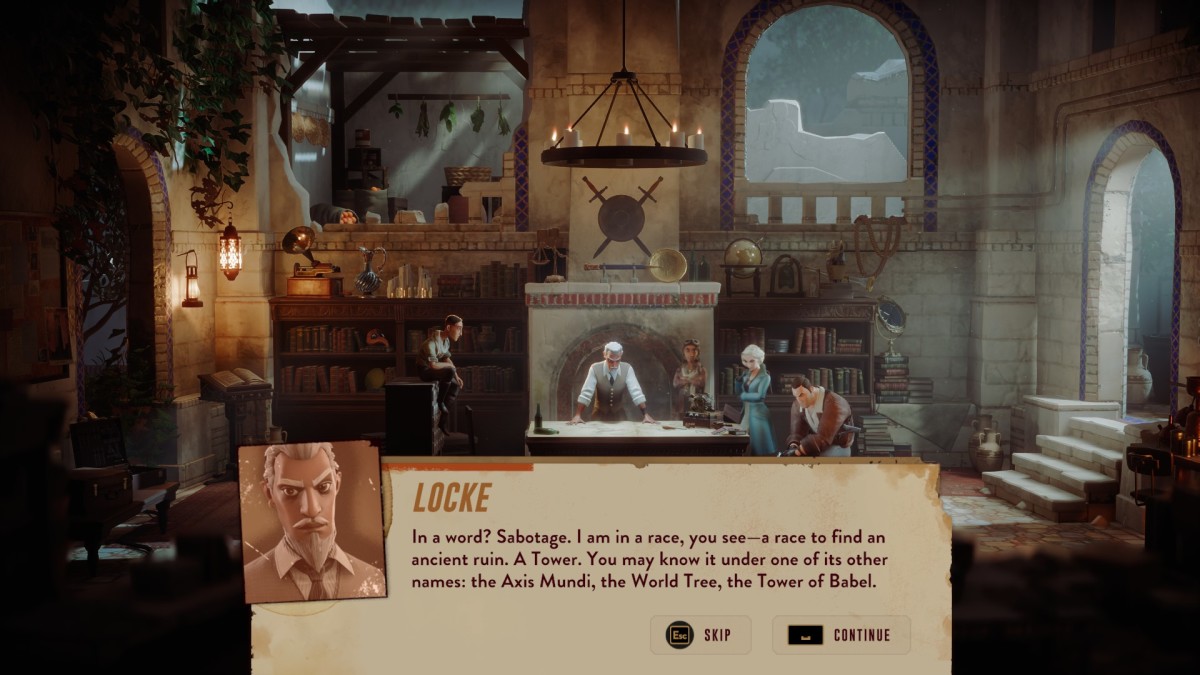
That’s part of the charm of this game with its 1930s setting, the Indiana Jones, Tomb Raider, and League of Extraordinary Gentlemen vibes. Your characters can fight well, just like Indy and Lara Croft can hold their own, but like these movie characters you’re primarily after something – and once you’ve got it, you book it. You’re going to spend a lot of time being chased around in The Lamplighters League as you steal and sabotage. And just like in these franchises, which remain rooted in history, there is a touch of the supernatural here. There are magical abilities, there are horrific creatures, and there is the race to reach The Tower, the root of all magic.
Locke wants to prevent the Banished Court from getting control of The Tower and while most of the characters are only in it for the money at first, they slowly find other reasons to make his goal their own – all of this character and plot development happens through dialog in your base, which isn’t the most flashy way of telling the story, but is still immensely satisfying thanks to the great performances delivered by all the voice actors. Generally, the voice work oozes style and character, be it in the more serious moments or during in-combat banter. Even the stereotypical German accent of Wolfram Strum, one of the main villains, is well done.
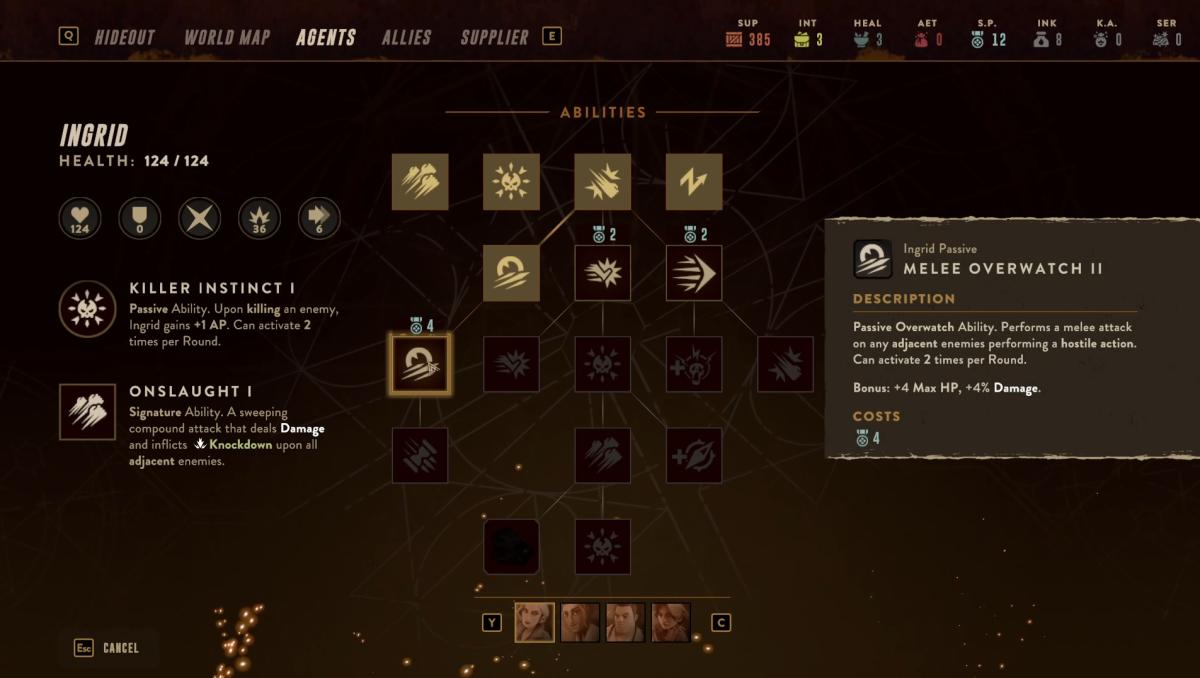
This fantastic voice work is aided by a great soundtrack composed by Jon Everest, who weaves together his typical synthwave sounds with classic orchestral adventure score and some spunky jazz, and the truly pretty visual style chosen for the game. All of these creative choices perfectly fit the theme and gameplay mechanics, creating something remarkable.
In your base, you not only make your way through dialogs: Here you invest the skill points earned during your missions to unlock additional abilities for your characters. Each character has a unique personality, backstory, motivation, and skill tree – the three agent classes only matter for their infiltration abilities. You can also equip them with consumables and items you produce in the base, though that means finding and rescuing certain support characters first and grabbing the necessary resources during your excursions.
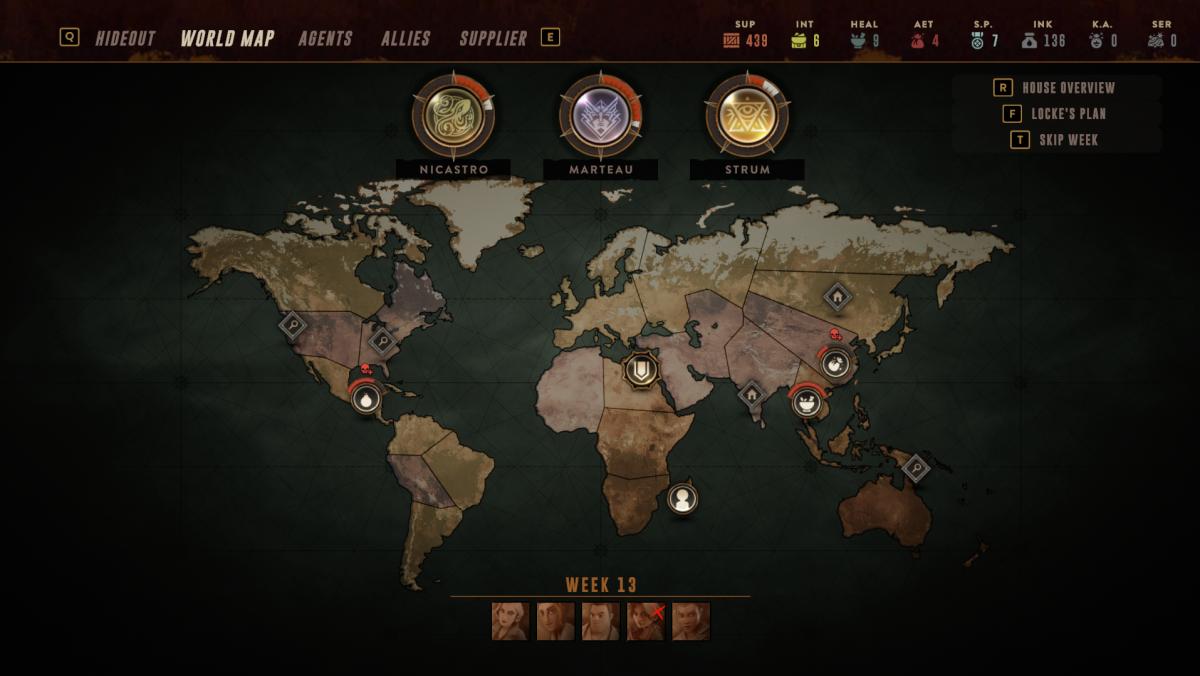
These are planned on the world map, where you find the available missions for the week that you can assign agents to. Threat meters show the progress of the three Banished Court factions in their hunt for The Tower and you’ll need to balance your attention between them to reduce threat by completing missions. If one faction reaches The Tower, it’s game over. As threat increases, so does the difficulty of missions, as new enemies and modifiers are added.
Character customization becomes a lot deeper thanks to the Undrawn Hand, a mystical deck of cards. Each mission yields at least one new card, though you can find more on each level. These cards contain passive skills and active abilities and each character can equip up to three of them – they can either complement their kits or completely change how they play. This is also a system that adds replayability, as it’s random which cards you get and there are three rarity levels to them. You can upgrade them by pulling a copy of one you already have or rescuing a certain NPC, who requires the ink resource to level up cards. It’s been a lot of fun experimenting with these.
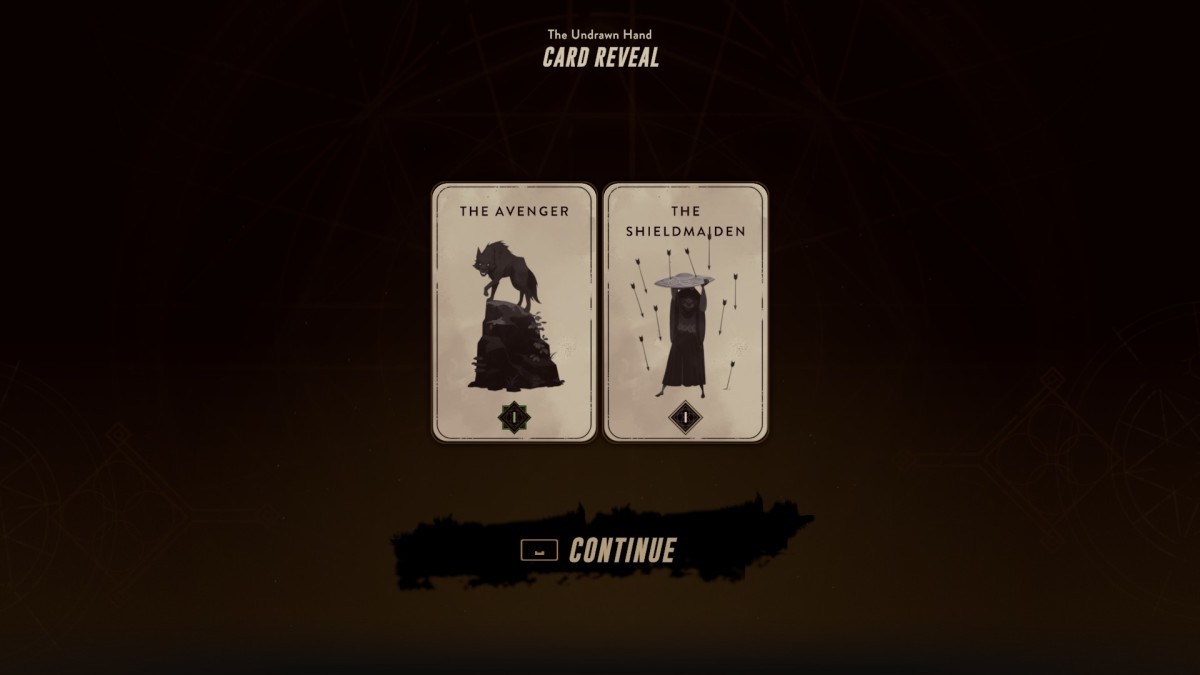
If characters get stressed out too much during a mission, they’ll gain a negative card for a few weeks or until you successfully complete a mission with them – in that case, you even get ink out of it. Stress is basically a second HP bar that gets filled as characters get attacked, so it’s another thing you have to manage along the way. Don’t worry, it’s not the Darkest Dungeon level of punishing. However, enemies are affected by this as well, leading to some cool scenarios: I once got Wolfram Strum to fight his own minions by stress-breaking him, unleashing absolute chaos when they, in turn, countered.
The difficulty of The Lamplighters League felt relatively appropriate throughout the game (playing on the middle difficulty grade). There is very little in terms of frustrating one-shot stuff, which is great, and, as mentioned earlier, you’re not supposed to stick around in fights that go badly until the end anyways.
It’s not all perfect, though, especially on the technical side. There’s stuttering when things like explosions happen on the screen and whenever you’re transitioning out of a loading screen. Reloading is a little funky as well: Things like retractable ladders seem to reset their visuals upon reloading, but retain their previous state, so my characters had to climb up an invisible ladder at one point. There are weird hiccups in the turn times as well with the AI sometimes requiring a lot of time to make its next move. Sometimes, when attacks activate passive effects from cards of the Undrawn Hand equipped on characters, there are strange pauses as well.
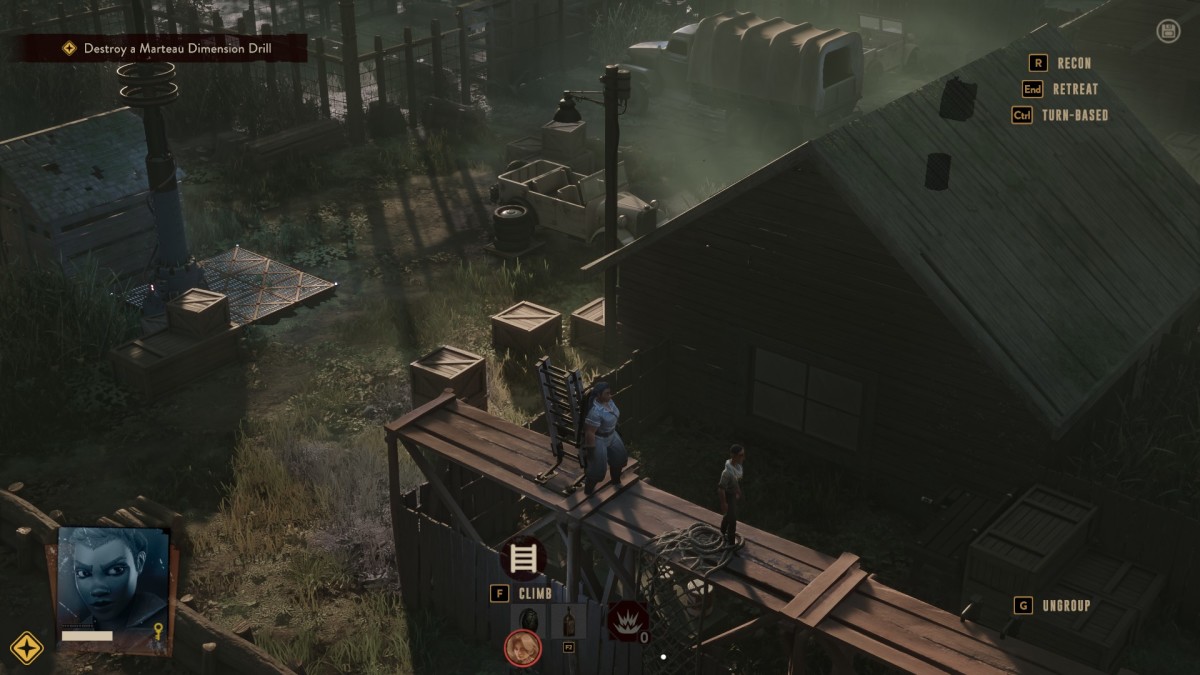
One major aspect doing the game no favors is the AI, which makes some questionable decisions. Ranged enemies tend to randomly run out of cover or into melee combat instead of simply attacking from there and the AI seems to have problems getting up ladders when you attack from the high ground – I once had a group running around like headless chickens as I was unloading salvo after salvo on it from above. Even the big bads – the scions, which can show up in missions to make them more intense – fall victim to this. In the scenario I described in the opening above, the sword-wielding Lady Nicastro seemingly bugged out and just didn’t attack me, instead preferring to run away from me as I made my escape. It’s not enough to reduce my enjoyment of the game, but it’s definitely noticeable.
Another annoyance is that things like status effects aren’t explained when you hover over them with your mouse – this would have been a perfect stage for nested tooltips. Recon mode does allow you to check effects, but that’s some clicks they could have saved players.
Altogether, though, these are minor distractions for me – The Lamplighters League is intriguing from the first second, sucking you in with a great art style, fantastic voice acting, a jazzy score, and supernatural mystery. It manages to keep this going by offering compelling gameplay systems that give you lots of freedom and feel immensely satisfying to use. For me, this combination makes The Lamplighters League the best turn-based tactics game of 2023.
Score: 9/10
- Visuals: 9/10
- Sound: 9/10
- Gameplay: 10/10
- Technical: 7/10
Version tested: PC.
